
views
- If you’re removing ivy from a tree, cut the vines around the base of the trunk, then all the vines on the tree at shoulder height to starve the vines further up.
- Use clippers to trim ground ivy into large square sections, then use your hands to roll those sections into logs. Or, mow over ivy to mulch it.
- Mix and spray a 2-5% solution of glyphosate or triclopyr onto ground or wall ivy to control it chemically, and repeat herbicide application as needed.
Killing Ivy on Trees
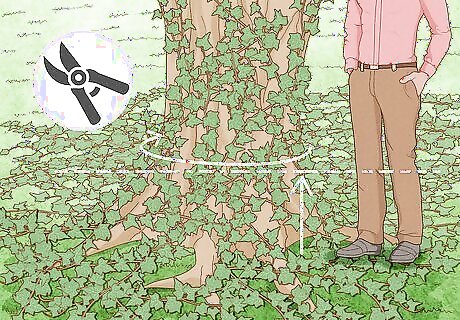
Cut the vines around the base of the tree. Walk around the tree and cut through every vine growing up the tree at about ankle height using shears or clippers. Work until the vines on the tree are completely severed from the ground. Even 1 remaining uncut vine can nourish the ivy further up the tree, so make sure not to overlook any tendrils. For very old, thick vines, use a lopper or a handsaw to carefully sever the vine. As you work, avoid making cuts on the tree itself. Ivy weakens trees and makes them more susceptible to disease. Cutting through the bark could cause further damage.

Cut another circle around the tree at shoulder level. Use the same technique to cut the vines a bit further up. This time, pull the cut sections of vines away from the tree as you go. By making 2 cuts and removing the section of ivy at the bottom of the tree, you block nutrients from reaching the vines higher up on the tree, causing them to wither. Mulch the vines or dispose of them in a plastic bag. As you pull the cut vines from the tree, avoid removing too much bark along with the more stubborn tendrils. Work gently but thoroughly. Use the same method to remove ivy from outdoor walls.

Cut and pull up ivy in a circle 6 feet (1.8 m) around the tree. Use shears to cut a line through the ivy along the ground, from the base of the tree to about 6 feet (1.8 m) away. Cut several more lines radiating from the tree to create sections of cut ivy in a circle around the tree. Then pull up the sections with your hands. Pull up the roots, as well, digging them out as needed. Dispose of the pulled ivy in plastic garbage bags to contain it. Avoid composting it, since the ivy may thrive in the compost heap and spread outward. Check the area around the tree every week, and pull up new tendrils as you see them. This is known as a “Lifesaver cut,” named for the popular circular candy. Imagine you’re cutting the shape of a Lifesaver around the tree.
Killing Ivy on the Ground
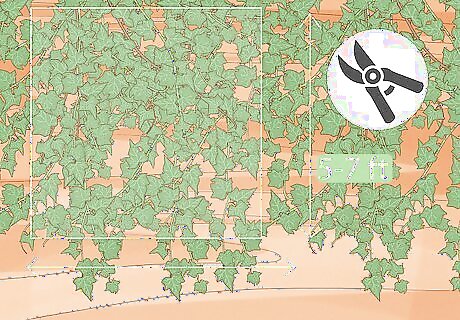
Cut the ivy into square, 5–7 ft (1.5–2.1 m) sections. Use shears to cut lines through the ivy along the ground, dividing it into large sections. This will make it much easier to remove the ivy from the ground. Pull the sections apart from each other as you cut to separate them. Work carefully around plants and saplings you want to keep. If you're working on a hill, cut vertical lines from the top of the hill to the bottom to create sections to roll downhill.

Cut and pull the ivy from around native plants to preserve them. Ideally, the area from which you’re removing the English ivy is void of any other plants. However, if there are native plants growing through the ivy, be very careful not to disturb or remove them. Use your garden shears/clippers to cut the ivy around the native plant so you can pull away the ivy without pulling out the native plant. Check your provincial or state government websites to determine which plants are native to your area, and avoid killing protected, native species.

Lift and roll the ivy sections off the ground. Lift the edge of one section of ivy and roll it forward on top of itself. Keep rolling the ivy forward until the entire section has been rolled up into a big log of ivy. Move the log to a separate area and continue rolling up sections until you've cleared the area. Mulching the ivy rolls to dispose of them and ensure they won't take root in the area again. If the ivy isn’t thick enough to make clean, rolled logs, use a flat, square garden shovel to scrape it off the ground after loosening it with your hands.
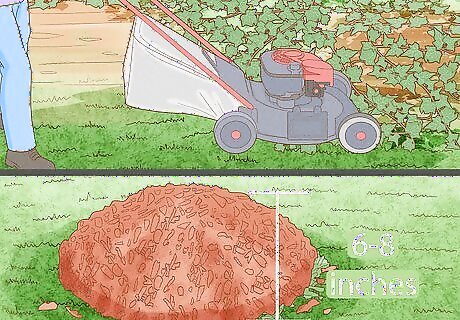
Mow the ivy short for a less laborious method. If you don’t have time or the capability to cut and roll the ivy, simply use a lawn mower. Set the mower as low as you can, then mow over any ground sections slowly and thoroughly. Afterward, cover the mowed ivy with 6–8 inches (15–20 cm) of mulch to stifle it. Afterward, spray the mulch with a foliar herbicide whenever new ivy shoots breach the surface of the mulch. Reapply herbicides every 6 weeks or so to permanently keep the ivy at bay.

Contain ivy you want to keep with a perimeter of mulch. If you have a patch of ivy you want to preserve without it spreading, use mulch to discourage new growth. After removing excess ivy, surround the ivy you want to keep with 6–7 inches (15–18 cm) of shredded or wood chip mulch. Add new mulch 1-2 more times during the spring and summer seasons. Note that this method requires some upkeep: monitor the patch and cut away any tendrils that venture across the mulch.
Applying Herbicides
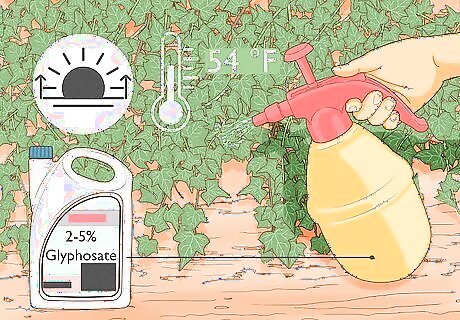
Apply 2-5% glyphosate or triclopyr solution to the leaves of the ivy. Use herbicides in tandem with physical removal to kill English ivy for good. To combat the vines with just herbicide, however, follow the manufacturer’s instructions to mix a 2-5% solution of either glyphosate or triclopyr. Use a handheld sprayer to apply that solution onto the English ivy. Spray enough so that the ivy leaves are wet, but not dripping with chemicals. Ensure the outside temperature is at least 12 °C (54 °F) and clear on both the day you spray and the following day, to make the herbicide more effective. English ivy leaves have a waxy texture to them, which makes it difficult for other herbicides to soak into and kill the plant. Wear a facemask and rubber gloves when spraying herbicidal chemicals, and keep children and pets away from the area for 2-3 days.

Spray 25% glyphosate or 2% 2,4-D to newly cut ivy vines and stems. Use these herbicides to better control vines after physical removal. Follow the manufacturer’s instructions to mix either a 25% solution of glyphosate or a 2% solution of 2,4-D amine. Use your garden shears/clippers to remove as many English ivy leaves and vines as possible. Use a handheld sprayer to apply the herbicides onto the cut ivy, making sure to concentrate your spray on the raw ends of the stems and vines. Before using any herbicides, check with your local government to determine if either glyphosate or 2,4-D are legal where you live. For the most effective application, make sure it’s at least 12 °C (54 °F) and clear on the day you spray the herbicide, as well as on the following day.

Avoid spraying areas where native plants are growing with the ivy. Herbicides are not selective. When you spray herbicides onto an area, they will kill any and all plants in that area, including native plants. If there are native plants in the same location as the English ivy you want to control, use a non-chemical control method instead. Check your provincial or state government website to identify which plants are native to your area. Be aware that some provinces or states consider it illegal to remove or disturb native plants.

Monitor the sprayed area once a month and remove new growth. English ivy is extremely hardy and resilient, which is part of why it’s considered invasive. Even herbicide use doesn’t guarantee total eradication, but it’s about as close as you can get. Throughout the year following herbicide application, monitor the ivy that’s been sprayed. If any specific areas are not dying off, spray additional herbicides onto those areas. You don’t need to remove dead or shriveled ivy if you prefer not to. These vines decompose harmlessly into the soil. Be aware that using herbicides in an area may prevent further growth of any other plants in that area. Repeat this process 2-3 weeks later if the first application doesn’t eradicate the ivy.



















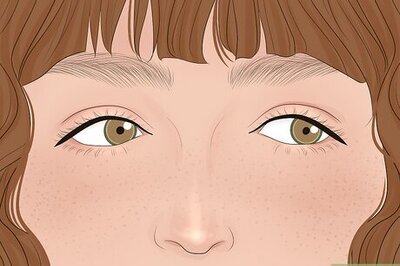
Comments
0 comment